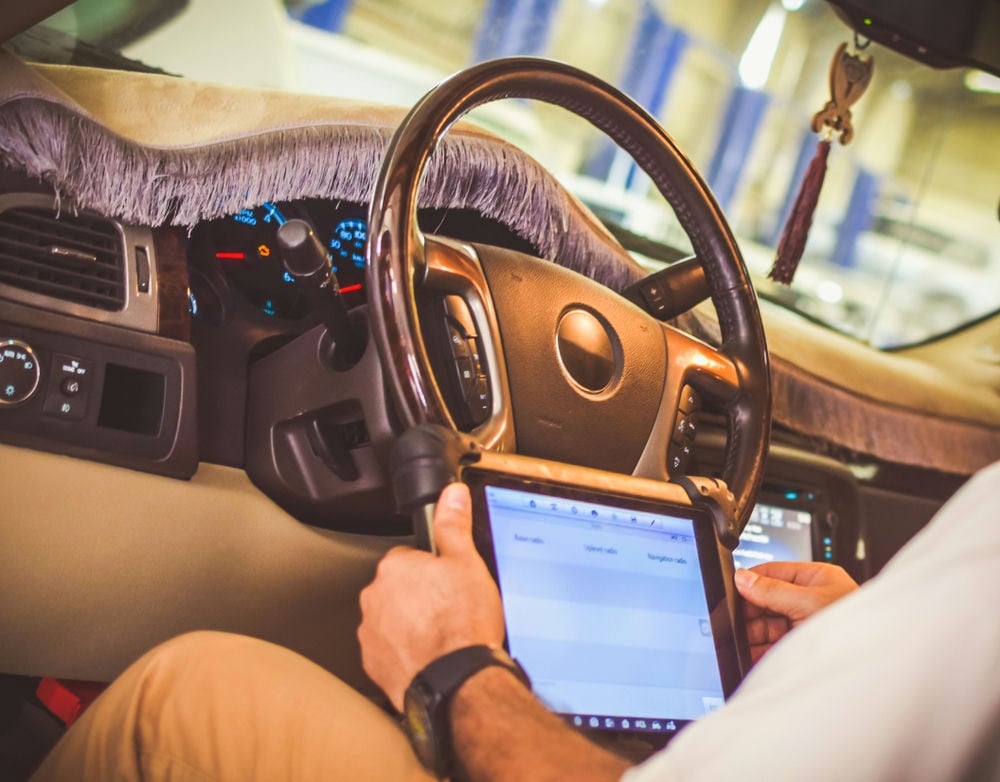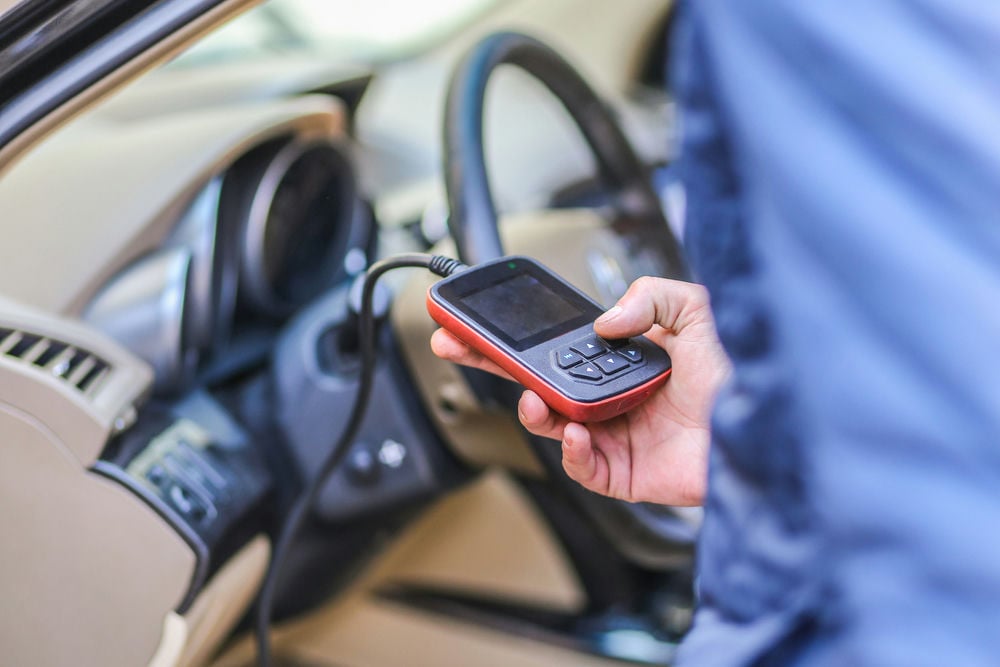When the check engine light comes on, many drivers reach for their code
readers to figure out what is happening. But does the car have to be
running to check codes?
No, a car does not have to be running for a scanner to check codes.
If the engine is off, the scanning tool can't communicate with the Engine Control Unit (ECU); hence it won't be able to scan for new codes or reset trouble codes. However, it can check for saved codes.
Below we go over how to check engine codes, if a code scanner will work if
your car isn't starting and if a code reader can be plugged in a while
driving the vehicle.
 Checking codes while a car is idling.
Checking codes while a car is idling.
How Do You Check Engine Codes In A Car?
You can check engine codes both manually and by using a scan tool.
Here is how you can do it:
Checking Engine Codes Manually
If your odometer is electronic, you can make it display the Diagnostic
Trouble Codes (DTCs).
-
Press the trip and reset button on the odometer.
-
At the same time, turn the ignition to the 'on' position.
-
Now release the odometer buttons, and the trouble codes will appear on
its display.
In some vehicles, you might need to switch the ignition key between 'on'
and 'off' a few times. Keep the odometer buttons pressed and end the
key-flipping action in the 'on' position.
Checking Engine Codes With A Scan Tool
Amazon has a multitude of OBD2 scanners at affordable prices like this one here (paid link).
If you have an OBD2 diagnostic tool, here is how you can use it to read
DTCs:
-
Make sure that the engine is off.
-
Plug the scan tool into the Diagnostic Link Connector (DLC) port,
usually located under the driver's side dashboard.
-
Now turn the ignition to the 'on' position without cranking the engine.
-
Wait for the scanner to power up.
-
Follow the screen prompts and provide the required information.
-
Once the scanner is ready, open the menu and select 'read codes.' The
device will present the DTCs, sometimes followed by a short description
of the issue.
 Retrieving the vehicle's trouble codes while it is not running.
Retrieving the vehicle's trouble codes while it is not running.
Can You Leave A Code Scanner Plugged In While Driving?
Yes, it is safe to leave the code-scanning tool plugged in while
driving a vehicle.
You can leave a code reader plugged into the diagnostic port while driving.
Many insurance agencies require you to have their scanner connected to
obtain information about your driving.
While a code scanner does not consume much battery power, disconnect it if
you won't be driving the car for several days.
Does Car Have To Be Running To Scan Codes?
No, a car does not have to be running for a scanner to check codes.
If it is not running, the scanner may only display saved
codes stored in its trouble code memory.
If you want to scan for DTCs, ensure your car's ignition is switched on. Every vehicle
has four ignition positions - off, accessory, run/on, and start. Let's see
what each of these signifies.
-
When the ignition is 'off,' all the engine systems are powered off.
-
In 'accessory' mode, the stereo and auxiliary equipment receive power.
-
All car systems, including the engine controller, are powered at the
'run/on' position.
-
The 'start' position is where the engine cranks.
You can still scan check error codes if you are not driving the car.
 Pulling trouble codes on a car that won't start.
Pulling trouble codes on a car that won't start.
Can You Read Codes If Your Car Won't Start?
If your car won't start, you can use code readers to check for any
stored codes in the trouble code memory.
Cars store trouble codes in their memory whenever a system or component
does not perform within acceptable limits.
If your car is cranking but does not start, you can use a code scanner to
check for any stored fault codes in its trouble code memory. You can
quickly figure out the fault and start troubleshooting it by reading these.
How Long Does It Take To Scan Codes?
It doesn't take long to scan codes on a car. Typically, an OBD2 scanner
takes about a minute to scan and display the trouble codes.
While it usually takes little time for an OBD2 device to scan codes, it can
sometimes take longer because of differences in makes and models.
Scanning codes may take longer in some cars because of how their diagnostic
system is designed.
Conclusion
A car does not have to be moving to check codes, but the engine has to stay
in the 'on' position for an OBD2 scan tool to communicate with the
Electronic Control Unit (ECU).
You can use a code scanner to check for saved trouble codes if your car is
not starting.
You can also read DTCs without a scanner. Follow the directions given
above.
Leaving a scanner connected to the car while driving is entirely safe. It
presents various sensor readings in real-time, so you can determine which
ones are in the suitable thresholds.